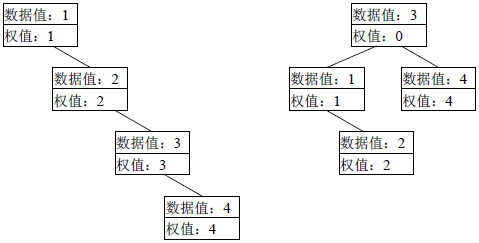NOI '09 P3 - Modified Treap
View as PDFNational Olympiad in Informatics, China, 2009
We are given a special kind of binary search tree. By definition, the key of any node in the binary search tree is strictly greater than the key of the node's left child, but is strictly less than the key of the node's right child.
On the other hand, each node of the binary search tree has a priority, where the priority of each node is strictly less than the priority of the node's children.
It is already known that all of the node keys in the tree are distinct, and that all of the node priorities in the tree are also distinct. Now we arrive at an interesting conclusion: if we can determine the keys and priorities of all the nodes in the tree, then the structure of the tree can also be determined. This is because we can think of this tree as one that's constructed by inserting all of the nodes in order of ascending priority, where the binary search tree nodes are compared by their keys.
We define the depth of a node in the tree as its distance from the
root node plus
Other than a key and a priority, each node also has an access frequency. We define a node's access cost within the tree to be its access frequency multiplied by its depth. The access cost of the entire tree is defined as the sum of the access costs amongst all its nodes.
Now, given each node's key, priority, and access frequency, you may
modify the priority of some number of nodes at an additional
modification cost of
Input Specification
The first line of input contains two integers
The next line contains
The next line contains
The next line contains
None of the keys, priorities, and access frequencies in the test data
will exceed
Output Specification
The output should consist of one line containing a single number, the minimum possible value achievable for the sum of the entire tree's access cost and the total modification cost.
Sample Input
4 10
1 2 3 4
1 2 3 4
1 2 3 4Sample Output
29Explanation
The left diagram below depicts the original tree in the sample input.
Its overall access cost is

Constraints
40% of the test cases satisfy
70% of the test cases satisfy
100% of the test cases satisfy
Problem translated to English by .
Comments